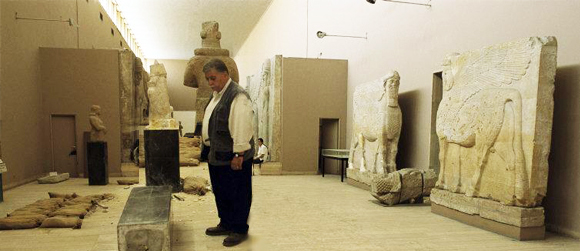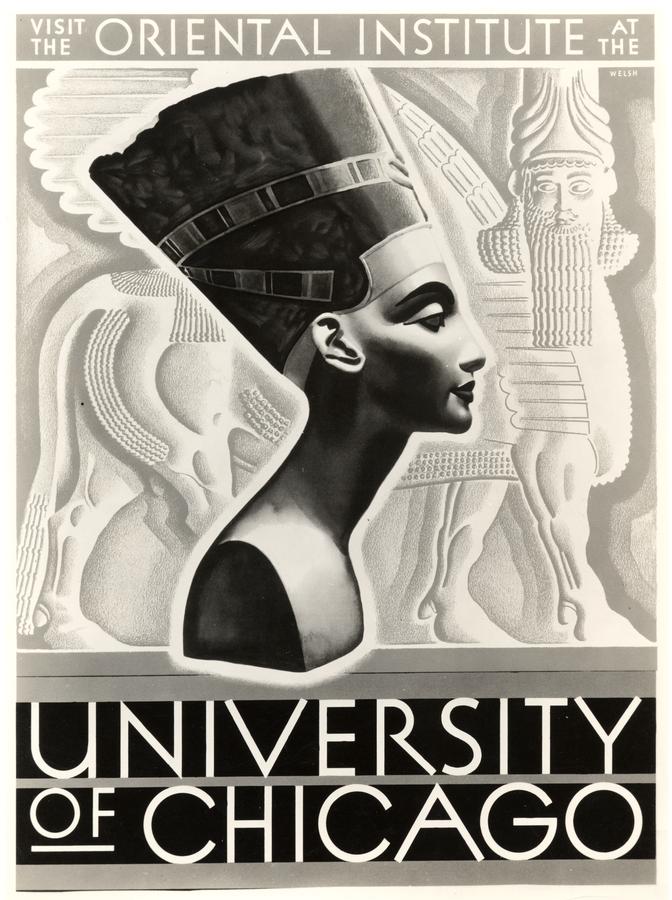Past tense
The Oriental Institute exhibit “Pioneers to the Past” chronicles the dangerous, thrilling and occasionally misguided adventures of a history-changing archeologist.
See the chronicle of news about the Oriental Institute.
A collaborative project intended to focus ideas and thoughts on the history of the Oriental Institute of The University of Chicago.
To start off a new series of posts highlighting the faculty and staff of the Oriental Institute, we asked Membership Coordinator Maeve Reed to tell us a little bit about herself. Maeve started at the OI in July of 2009. This text is adapted from the fall issue of News & Notes

Continuing with our Faculty and Staff biographical series, today we're featuring the Director of the Oriental Institute, Gil Stein.
Gil J. Stein is Director of the Oriental Institute and Professor of Near Eastern Archaeology in the department of Near Eastern Languages and Civilizations at the University of Chicago. He received his BA (Phi Beta Kappa, Summa cum Laude, honors in archaeology) from Yale University in 1978 and his PhD in Anthropology from the University of Pennsylvania in 1988. He has excavated and surveyed in the American Southwest, Turkey, and Syria, He has been a National Science Foundation Graduate Fellow, a Fulbright Scholar in Turkey (1982-3), a post-doctoral fellow at the Smithsonian Institution (1988-9), and a Resident Scholar at the School of American Research (1994-5)...


The Oriental Institute photographic archive contains more than 100,000 images dating from prior to the founding of the Oriental Institute up to the present day. The collection includes site photography, ethnographic images, object photos, event and vacation shots, and images of documents. Until recently, searching for these images was difficult at best. Beginning in the mid-1990s, we began to enter our card catalog of images into a Filemaker database. More recently, additional information was added to the database including a field for a thumbnail image. The database is now online, though not widely published.
As of February 2010, there are more than 70,000 entries from our photo catalogue in the database, 35,000 of which have an image scanned and attached.
We invite you to take a look at the database in its current beta form.
Click on the link that says 'Oriental Institute Museum Photographic Database.' At the login page, click the 'Guest Account' radio button and then click 'Login.' Use the left and right hand buttons on the screen to scroll through the database, or use the magnifying glass to search.
Photographs in our records are catalogued in several different ways. A P number refers to the photograph of an object, while an N number was given to a negative. Most images have both a P and N number. There are also S Numbers for lantern slides, SM numbers for 35mm slides, a wide variety of field number sequences, and a newer D number series for native digital images.
The current project is to complete data entry for the P. Number series. Currently we have entered 32,700 cards (out of 68,500) from the P. series. Finishing the data entry for the P number sequence will substantially complete the N and S sequences as well.
The database is a work in progress. If you find typos or other mistakes, or if you'd just like to send comments or suggestions for improvement please e-mail them to oi-museum@uchicago.edu
Many of the entries in the database have images attached in a resolution that is appropriate for use in PowerPoint or other presentations. Full resolution images for study and publication are available as well. If you would like to order images, please visit https://oi.uchicago.edu/order/photographs/

Other tours are under development.
A visitor can download the tours ahead of time and play them on her own iPod as she walks through the Museum, or she can check out iPods at the Suq at no charge to members, and for a fee of $5.00 for non-members.

Beatrix Jones Farrand (1872-1959) : fifty years of American landscape architectureavailable online here.
Author: Diane Kostial McGuire; Lois Fern
Publisher: Washington, D.C. : Dumbarton Oaks Trustees for Harvard University, 1982.




